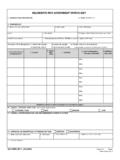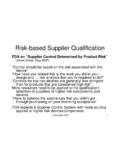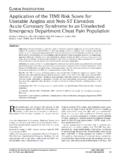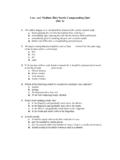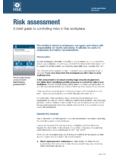Transcription of Risk%Adjustment,%HCC%Model,%&% …
1 Risk adjustment , HCC Model, & Stars Ra8ngs 101 An Overview for Coders & Providers Risk adjustment (RA) Risk adjustment is a method of analysis using diagnoses for nancial forecas8ng that has been growing in popularity in healthcare Medicaid plans began using Risk adjustment modeling in 1996 and has con8nued to update that model Medicare Advantage Plans have been using the HCC/ Risk adjustment model since 2004 and is expanding the program Commercial Plans are now looking at Risk adjustment as a valuable method to iden8fy and plan for high risk pa8ents 3/17/13 ionHealthcare, LLC All rights reserved. For educa8on & discussion purposes.
2 PermiUed use via contractual agreement/purchase. 2 RA & A ordable Care Act The A ordable Care Act calls for a risk adjustment program that aims to eliminate incen8ves for health insurance plans to avoid people with pre- exis8ng condi8ons or those who are in poor health. Risk adjustment ensures that health insurance plans have addi8onal money to provide services to the people who need them most by providing more funds to plans that provide care to people that are likely to have high health costs. Insurance plans then compete on the basis of quality and service, and not on the basis of whether they can aUract healthy people (Larsen, 2011) 3/17/13 ionHealthcare, LLC All rights reserved.
3 For educa8on & discussion purposes. PermiUed use via contractual agreement/purchase. 3 Di erent Programs, Same Goal Whether Risk adjustment is being u8lized for Medicaid, Medicare, or Commercial pa8ents, the main ingredients used are Diagnosis Codes (ICD codes) Diagnoses are collected and their speci city drives risk score or categoriza8on The worse, or more serious a condi8on, or diagnosis, the higher the risk scoring Risk Scores either a ect incoming payment or the future nancial forecas8ng for each pa8ent 3/17/13 ionHealthcare, LLC All rights reserved. For educa8on & discussion purposes. PermiUed use via contractual agreement/purchase.
4 4 Why It MaUers For Medicare Advantage Plans Risk adjustment (RA) iden8 es pa8ents who may need disease management interven8ons and RA establishes the nancial allotment allowed from CMS toward the annual care of each pa8ent; with more dollars allocated for those with higher risk scores For Medicaid and Commercial Plans Risk adjustment (RA) iden8 es pa8ents who may need disease management interven8ons and RA establishes the overall state of the popula8on by aggrega8ng diagnoses; which assists in nancial forecas8ng for future medical need 3/17/13 ionHealthcare, LLC All rights reserved. For educa8on & discussion purposes.
5 PermiUed use via contractual agreement/purchase. 5 General RA Guidelines These programs operate on similar rules and guidelines to include: Speci c diagnoses must be documented in a face- . to- face visit by the trea8ng licensed provider (showing creden8als: MD, DO, PA, NP, OT, CRNA, MSW, and similar master's level providers) and the documenta8on must be signed by the trea8ng provider to be accepted Diagnoses must be clearly stated on the DOS (Date Of Service) as a current problem if audited Diagnoses must be documented each year, ongoing as each year is evaluated without historical context in uence 3/17/13 ionHealthcare, LLC All rights reserved.
6 For educa8on & discussion purposes. PermiUed use via contractual agreement/purchase. 6 Signi cance to Providers Providers have long aUempted to establish the seriousness and severity of the pa8ents they treat through the use of E&M CPT codes Higher level E&M codes iden8fy serious encounters, u8lizing more medical decision making, and are reimbursed at a higher rate In Risk adjustment scenarios, these CPT codes have no signi cance Instead, speci c diagnosis codes communicate the seriousness of medical decision making 3/17/13 ionHealthcare, LLC All rights reserved. For educa8on & discussion purposes. PermiUed use via contractual agreement/purchase.
7 7 Signi cance to Providers Using speci c ICD Diagnosis Codes will help convey the true seriousness of the condi8ons being addressed in each visit Documen8ng these carefully involves two main focal points: Iden8fying the Diagnosis as a current or ongoing problem as opposed to a PMH (Past Medical History) or previous condi8on Choosing the most speci c Diagnosis Code while also being sure documenta8on supports it 3/17/13 ionHealthcare, LLC All rights reserved. For educa8on & discussion purposes. PermiUed use via contractual agreement/purchase. 8 Origins of Medicare Advantage & the HCC Model Sub8tle A of the Balanced Budget Act of 1997 created Medicare Choice for pa8ents.
8 This allowed pa8ents to choose the original Medicare FFS program or a Medicare + Choice program. The Medicare Moderniza8on Act of 2003 changed Medicare + Choice to Medicare Advantage The new Medicare risk adjustment model was gradually phased into Medicare advantage payment calcula8ons star8ng in 2004 (with full implementa8on in 1/2007) Developed by researchers at RTI Interna8onal, Boston University and Harvard medical school, Hierarchical Condi8on Categories, uses ambulatory and inpa8ent diagnosis to create a valid risk adjustment methodology to help predict individual expenditure varia8on among Medicare pa8ents 3/17/13 ionHealthcare, LLC All rights reserved.
9 For educa8on & discussion purposes. PermiUed use via contractual agreement/purchase. 9 The HCC Model is Ever- . Changing The original DCG/HCC model in 2000 iden8 ed 804 costly diagnosis groups, mapped to 189 HCC codes Created a repor8ng model for reimbursement based on ICD codes within families of condi8ons. (Hierarchal Categories) There are 2,944 ICD codes carrying Part C HCC value. The program began with over 3,000 in 2004 There are 1,475 ICD codes carrying Part D HCC value. The program began with over 3,000 in 2004 978 ICD codes carry both Part C and Part D HCC value. The program began with ~ 1500 in 2004 Major Changes are due for 2014 (new HCC's, split values, etc.)
10 3/17/13 ionHealthcare, LLC All rights reserved. For educa8on & discussion purposes. PermiUed use via contractual agreement/purchase. 10 How ICD Codes Carry Value Most of the ICD diagnosis codes which are in the model are chronic condi8ons Risk adjustment is based on adjus8ng the es8mated risk of each pa8ent based on known diagnoses Part C HCC (HCC- C) are those diagnoses which are costly to manage from a medical perspec8ve Part D HCC (HCC- D) are those diagnoses which are costly to manage from a prescrip8on drug perspec8ve Some diagnoses carry both part D and Part D value These ICD codes have a RAF (risk adjustment factor), similar in concept to the RVU value of procedure codes 3/17/13 ionHealthcare, LLC All rights reserved.

